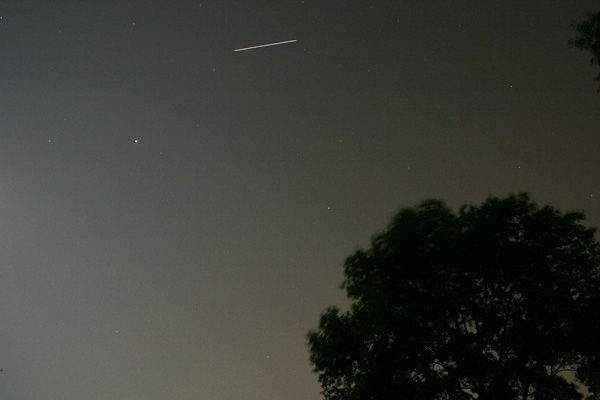


How to Photograph the Space Shuttle
Copyright 2006 Michael A. Covington.
This material originally appared in
Michael Covington's Daily Notebook,
July 6, 2006.




When the Space Shuttle and International Space Station are docked together, they form a very large satellite which looks like a bright star moving rapidly across the sky, easily mistaken for an airplane. This evening they flew over Georgia, and I got this picture, a 5-second exposure with a Canon Digital Rebel at ISO 400 and a 28-mm lens at f/4.
The Shuttle is the streak at the top. The bright stars are Jupiter and Spica. The moon is outside the picture at the left.
You can take pictures like this. First, go to www.heavens-above.com and find out exactly when the Shuttle is coming; star maps as well as times are provided for any location on earth.
(I should add that when the Shuttle and ISS are not docked together, they still look like rather bright, moving stars, and you can still photograph them. Of course, the ISS is in orbit all the time, not just during Shuttle missions.)
Then put your camera on a tripod and aim it skyward. Set it for a manual exposure of about 5 seconds and focus on infinity. On simpler cameras, infinity focus is the mountain symbol. On a DSLR, you should focus manually, and don't trust the infinity mark on the lens; take a few test shots of a bright star and see if they're sharp. Use a cable release or delayed shutter release (the clock symbol) to take the picture without vibrating the camera.
If this kind of thing interests you, please see my book, Astrophotography for the Amateur, and its web pages, as well as my DSLR pages, which include some information about DSLR astrophotography.